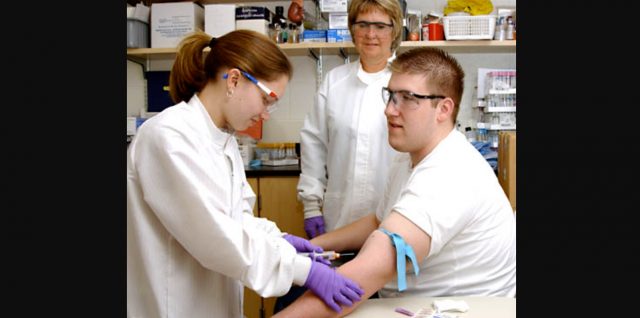What medical procedures do you know? The chances are high that you would mention two or three for sure. That is because medicine was the field that constantly evolved in the course of human history, while there are methods that have persisted in that evolution and are still relevant. For example, drinking hot drinks is still the go-to move when you have caught a cold or the flu. On the other hand, you already know subconsciously that doctors will ask for your blood – they will ask for a blood draw – to run some analysis. This is already common knowledge, but modern times have come to offer something new. Read on to find out the exciting history of phlebotomy or blood draw and how it can help you today.
Once Upon a Time
Phlebotomy is not something novel; even ancient Greeks, Romans, and Egyptians knew about it. They would reflect on these practices in their specific way saying that a doctor should use phlebotomy to free the body of diseases or “evil spirits.” They would opt for bloodletting allowing the patient to lose as much blood to faint or even die eventually. Interesting fact! George Washington became a victim of bloodletting as doctors withdrew 40% of his blood.
Many ages ago, physicians would choose bloodletting as a cure for almost everything. Medical texts written in the middle ages suggest that bloodletting was used for acne, cancer, diabetes, epilepsy, gangrene, insanity, indigestion, jaundice, plague, smallpox, etc. The reason was that humans didn’t know much about the way a disease killed people, so they would imagine that letting the blood run would take with it all the hazardous spirits and elements out.
Being Lucky
You might think that you are lucky enough to live in the 21st century as doctors are more trained and more careful when prescribing a blood draw. You are right but read on to learn why you are extra lucky. They have long stopped using this practice for everything and offer it to patients with extra red blood cells or too much iron. Also, people who have hemochromatosis, sickle cell disease, or nonalcoholic fatty liver disease can benefit from such therapeutic phlebotomy. However, the healthcare system mainly uses phlebotomy for testing.
Procedure
When being tested, your doctor might ask you to stop eating 10-12 hours before the procedure. This is not a rule, but many physicians claim it ensures more precise test results. During the procedure itself, your phlebotomist will give you the necessary instructions: lie or sit and fist your arm. She will tie a band – a tourniquet – around your upper arm to make your veins more visible. This way, she can spot the right place to insert the needle much more effortlessly.
The needle used will have a test tube or bag to collect the required amount of blood. When the tube already has the necessary amount of blood, the phlebotomist will take the needle out. She will either put a bandage on or give you some cotton to press the gauze spot for a couple of minutes.
Trends
Humanity now is lucky to live in the 21st century also due to the modern phlebotomy methods. The pandemic hit the healthcare system, too; so many were either scared or deprived of the possibility of going to hospitals and having a blood draw. The excellent news is that an innovative approach, called mobile phlebotomy, has offered many benefits. The patients consult with their doctors and agree on a phlebotomist’s visit. The latter takes place when and where it is comfortable for you. The specialist comes with all the necessary equipment, takes blood samples, and delivers them to the lab. When the results are ready, the doctor advises the patient on their next steps and treatment.
As you can see, phlebotomy was a long part of human history. From being a panacea and a cure to every illness, it evolved to be a wise method used only when necessary. It walked along with the pandemic challenges and emerged into mobile phlebotomy trends. Make sure to use them to your advantage to have your finger on the pulse of your well-being.





